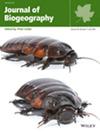The Pathobiome of Salmo trutta From the North Sea to the Barents Sea
Abstract
Aim
Salmonids are some of the best studied species with respect to their pathobiome, and at the northern range limit, there is potential for pathogens to expand with both climate change and increased fish farming in the north.
Location
We sampled sea-run brown trout from throughout Norway for gill tissue and conducted both pooled and individual screenings for a total of 47 pathogens.
Time Period
Samples were collected during spring in 2020 and 2021.
Major Taxa
Bacteria, viruses and parasites of sea-run brown trout.
Methods
Brown trout were gill biopsied as part of the national sea lice monitoring programme and samples were sent for laboratory analysis using the Fluidigm system, which screened for a broad panel of different pathogenic species.
Results
Permutated multivariate analysis of variance revealed that the pathobiome richness of trout was more related to latitude than to fish farming biomass in the region where samples were taken. However, non-metric multidimensional scaling revealed a significant association between the individual pathobiome and the number of copepodid-stage Lepeophtheirus salmonis lice, which did reveal a south/central versus northern Norway segregation in pathogen distributions. Importantly, many pathogens positively associated with sea lice in southern/central Norway are known to be carried, and potentially transmitted by sea lice.
Main conclusions
In northern Norway, pathogens normally associated with infection and disease in trout were more commonly observed. However, given that most pathogens were detected from southern to northern Norway, it appears that further expansion of farms in the north are not likely to lead to further introductions of pathogens into northern areas of Norway, although it could amplify the prevalence of these pathogens on wild salmon.


 求助内容:
求助内容: 应助结果提醒方式:
应助结果提醒方式:


